With perennials often costing £10 and upwards at the garden centre, it makes sense to grow your own from seed. Sown in early spring, many perennials will flower in their first year, and will come back every year, making them excellent value.
We asked four experts – Derry Watkins, owner of Special Plants in Wiltshire, Xa Tollemache, garden designer, Joseph Atkin, head gardener at Aberglasney Gardens in Camarthenshire and Marina Christopher, nurserywoman and skilled propagator, to recommend their favourite fast perennials to grow from seed.
How to grow perennials from seed
- Most hardy perennials can be sown in early spring, under cover in modules or seed trays at a constant temperature of around 18-20°C – a heated propagator helps to ensure a steady temperature.
- Once the seedlings have germinated (this can take anything from a couple of weeks to a couple of months, depending on the plant), remove them from the propagator and place on a sunny windowsill or in a greenhouse.
- Once they have produced true leaves, prick them out.
- As they grow, pot the seedlings on into larger pots.
- Harden off before planting out in late spring or early summer.
- Alternatively, you could scatter the seed where you want it to grow in late summer or autumn, when most plants are naturally producing seed.
For more advice on sowing seeds, head to our detailed guide to planting seeds.
Fast growing flowers from seed: quick perennials to grow
Scabiosa atropurpurea ‘Black Knight’
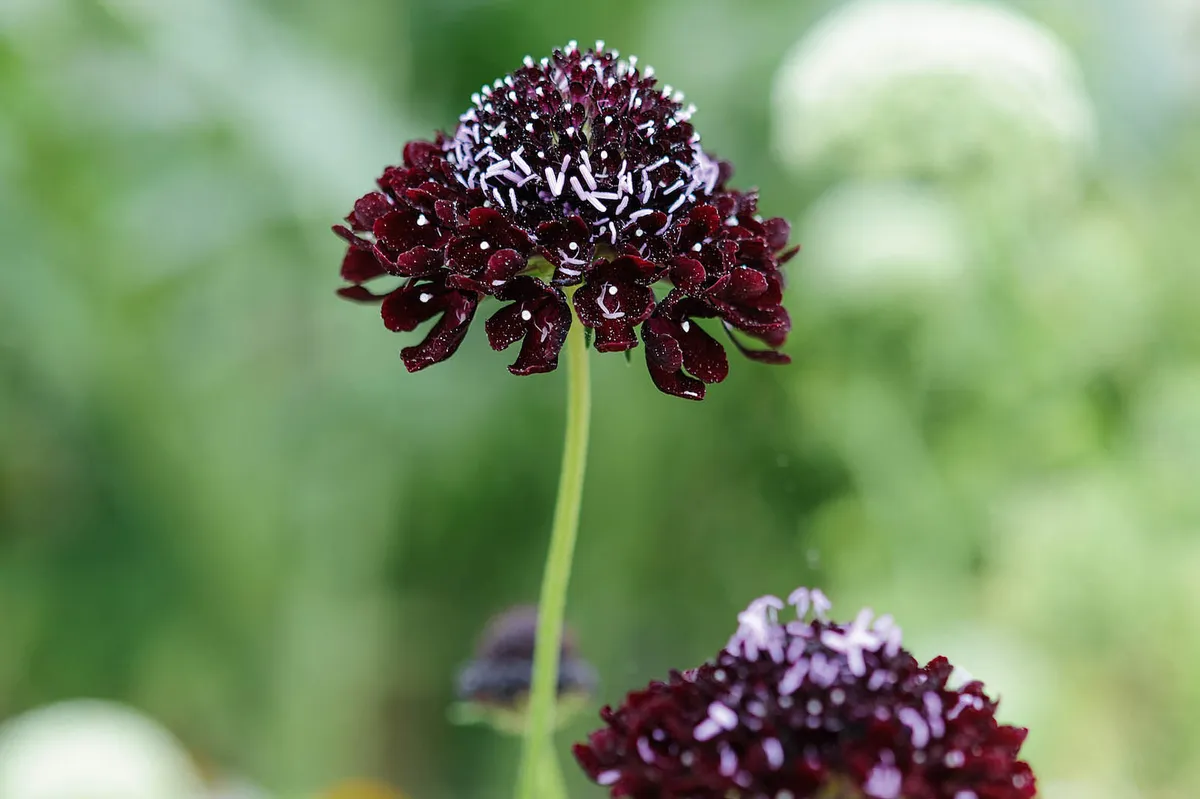
Spectacular, big, near-black flowers speckled with tiny white stamens. A tall plant, usually grown as a cut flower, this will need some support and a few friends around it to hide its rather unattractive legs. Height: 90cm. RHS H4.
Recommended by Derry Watkins
Pennisetum thunbergii ‘Red Buttons’
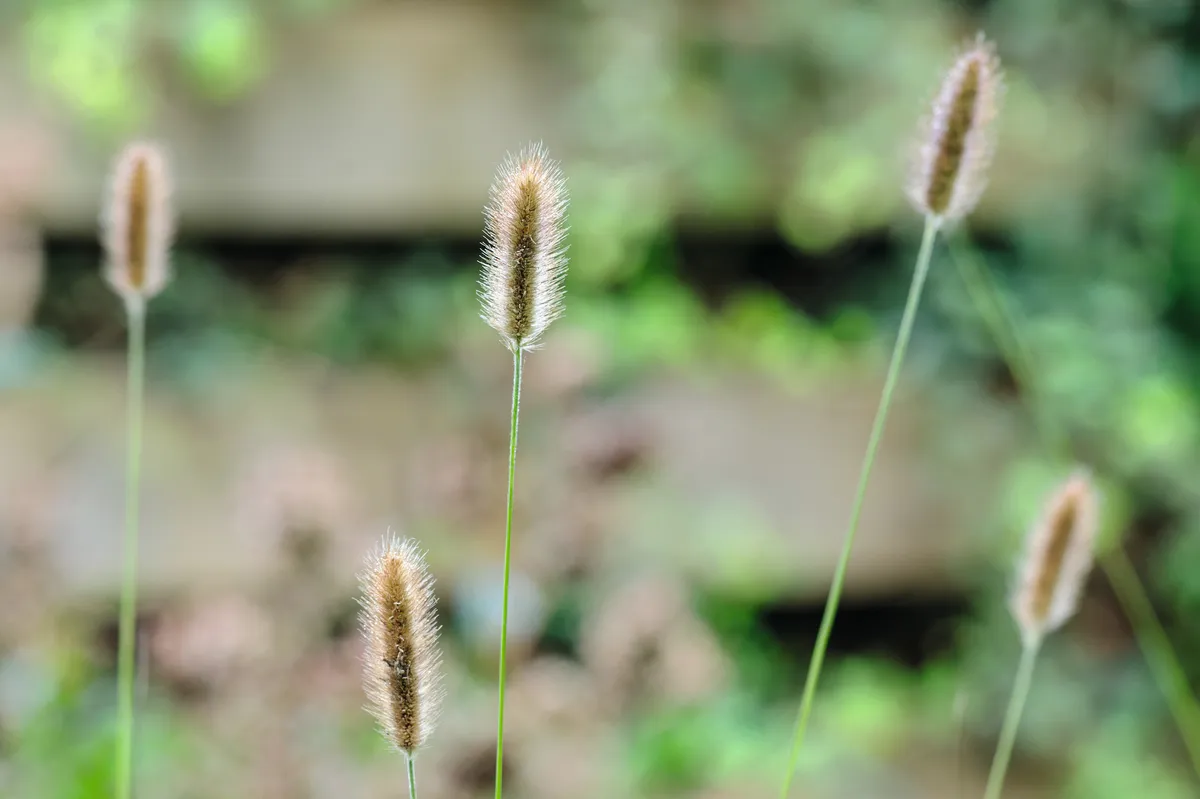
The red-flushed flowerheads of this grass bob above compact green foliage from late summer through autumn, gradually bleaching to buff. It prefers a sheltered position in full sun, and is quite drought tolerant once established. Height: 80cm. RHS H3.
Recommended by Derry Watkins
Read our Pennisetum growing guide.
Sidalcea ‘Rosaly’

Grow this for its pale-pink, wide-open, mallow-like flowers, which are arranged in spires on upright stems, and will bloom on until the first frosts if deadheaded. Very showy and loved by bees. Height: 90cm
Recommended by Derry Watkins
Antirrhinum majus ‘Sonnet White’
One of the selections from the Sonnet Series, ‘Sonnet White’ offers upright stems crammed with those familiar-looking snapdragon flowers in pure white. Often grown as an annual, the Sonnet Series can also be grown as a short-lived perennial. It’s a great cut flower and loved by bees, as well as being easy to grow from seed. Sow February to April. Height: 45cm. RHS H3, USDA 7a-10b.
Recommended by Xa Tollemache
Cephalaria gigantea
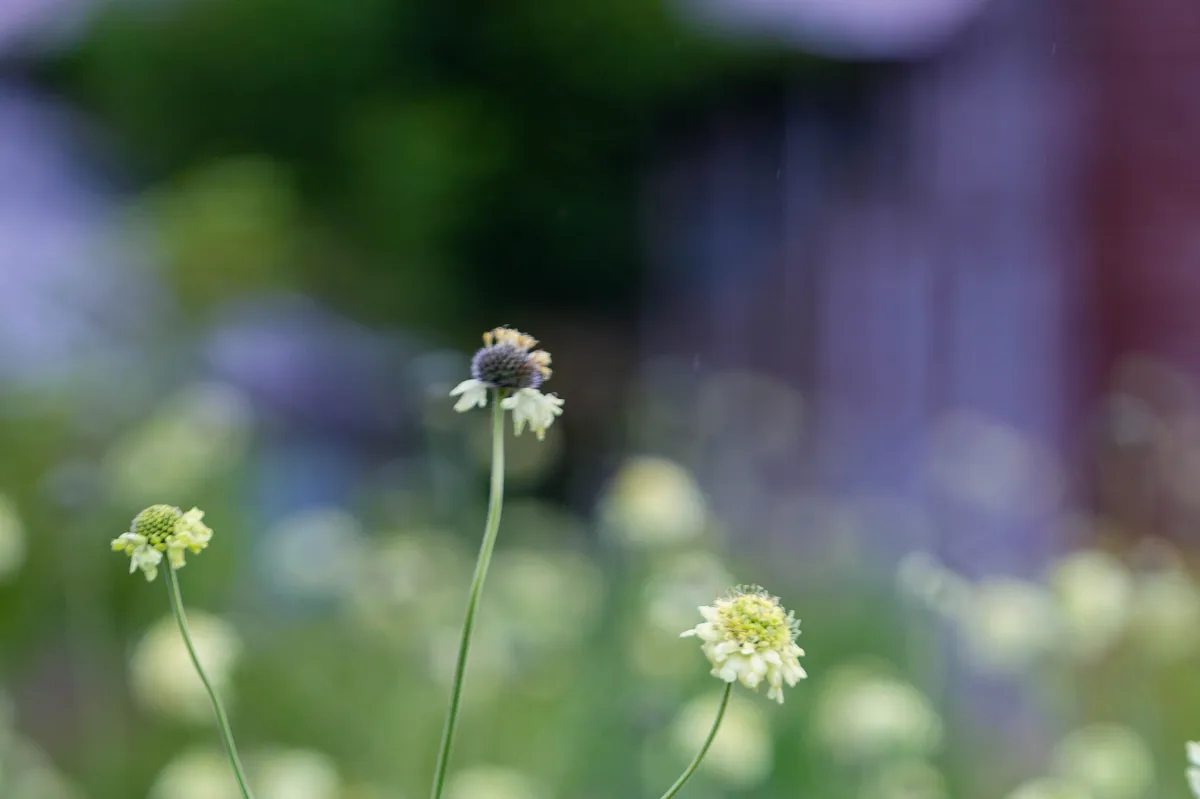
I love this at the back of a border, floating about and attracting bees – and such an exciting plant to have grown from seed. Scabious-like flowers in cream with a tinge of yellow are held high on long stems. Another great choice for pollinators and as a cut flower. Sow in March for summer flowers. Height: 1.8m. RHS H7, USDA 3a-7b.
Recommended by Xa Tollemache
Delphinium Belladonna Group
There are various cultivars in this group, offering choices in pink, white, blue and purple. It’s the brilliant blues that I really love. Tall stems with racemes of delicate- looking flowers make great impact in border and are perfect for cutting. Sow indoors in spring. Height: 1m. RHS H4, USDA 4a-8a.
Recommended by Xa Tollemache
Achillea ptarmica ‘The Pearl’
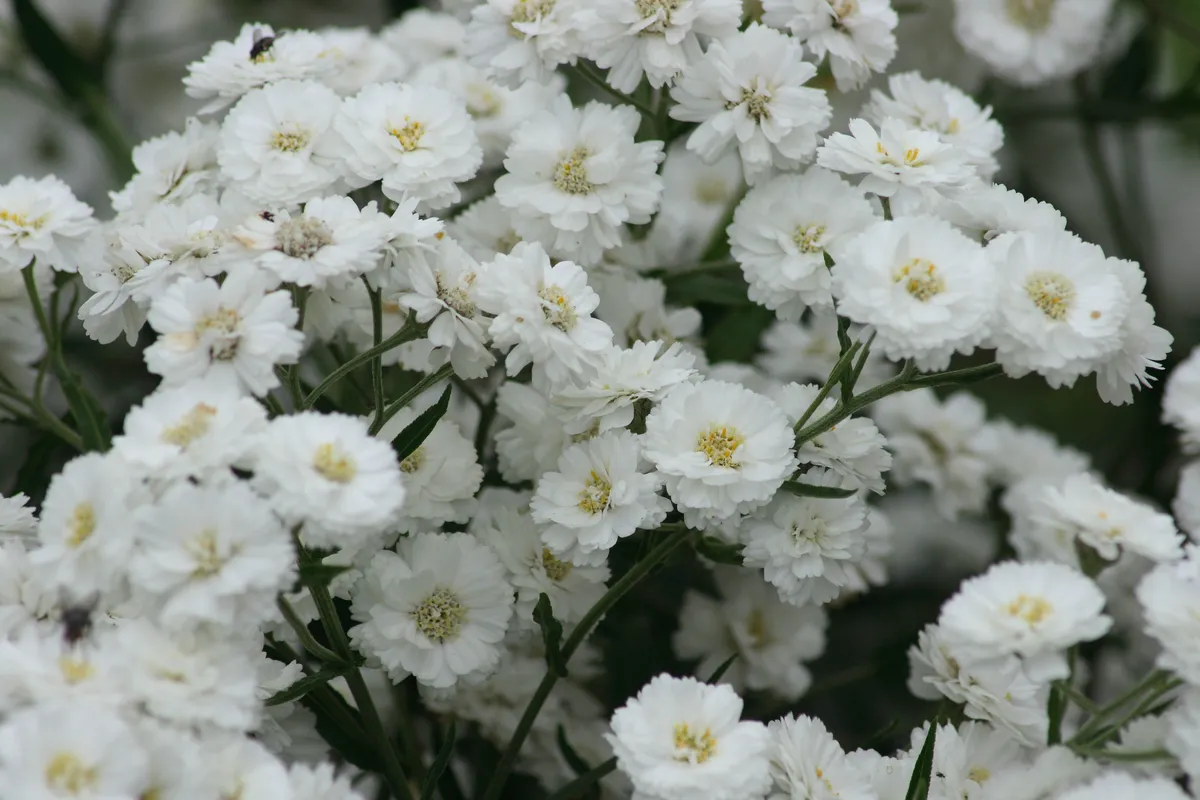
This is a charming little border plant, growing quickly to form a mound. It can be invasive but don’t let that deter you from growing what is sometimes described as
a perennial gypsophilia, with its sprays of white double or semi-double button flowers. Cut back after flowering for a second flush. Sow indoors February to June. Height: 75cm. RHS H7, USDA 3a-9b.
Recommended by Xa Tollemache
Oenothera lindheimeri
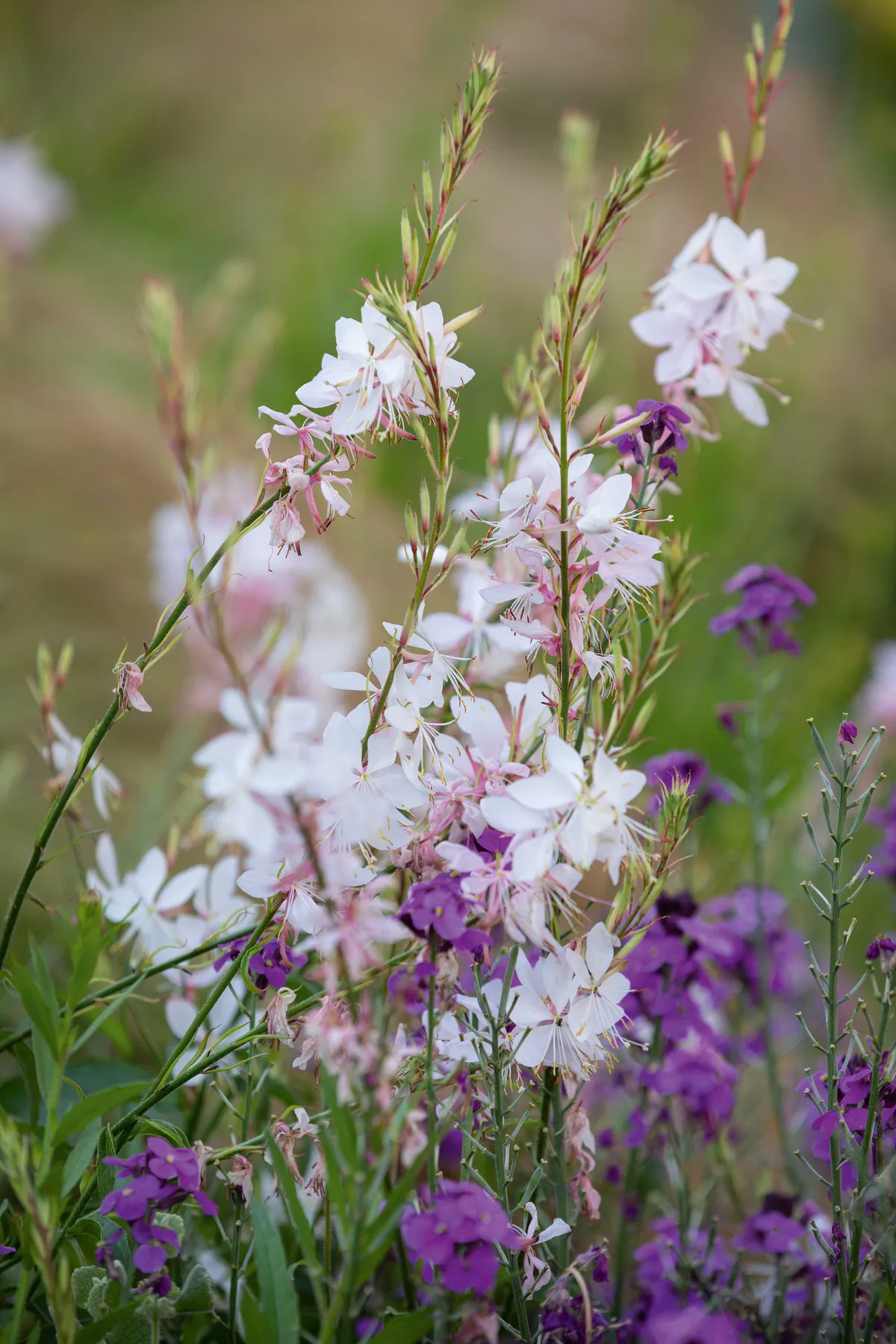
My favourite of all time – and in flower June to November. Previously known as Gaura lindheimeri, its tall stems with willow-like leaves hold aloft the white-flushed-pink, star-shaped flowers with their delicately dangling anthers. Good drought tolerance and loved by pollinators. Sow indoors January to May. Height: 1.2m. AGM*. RHS H4, USDA 5a-9b.
Recommended by Xa Tollemache
Papaver orientale
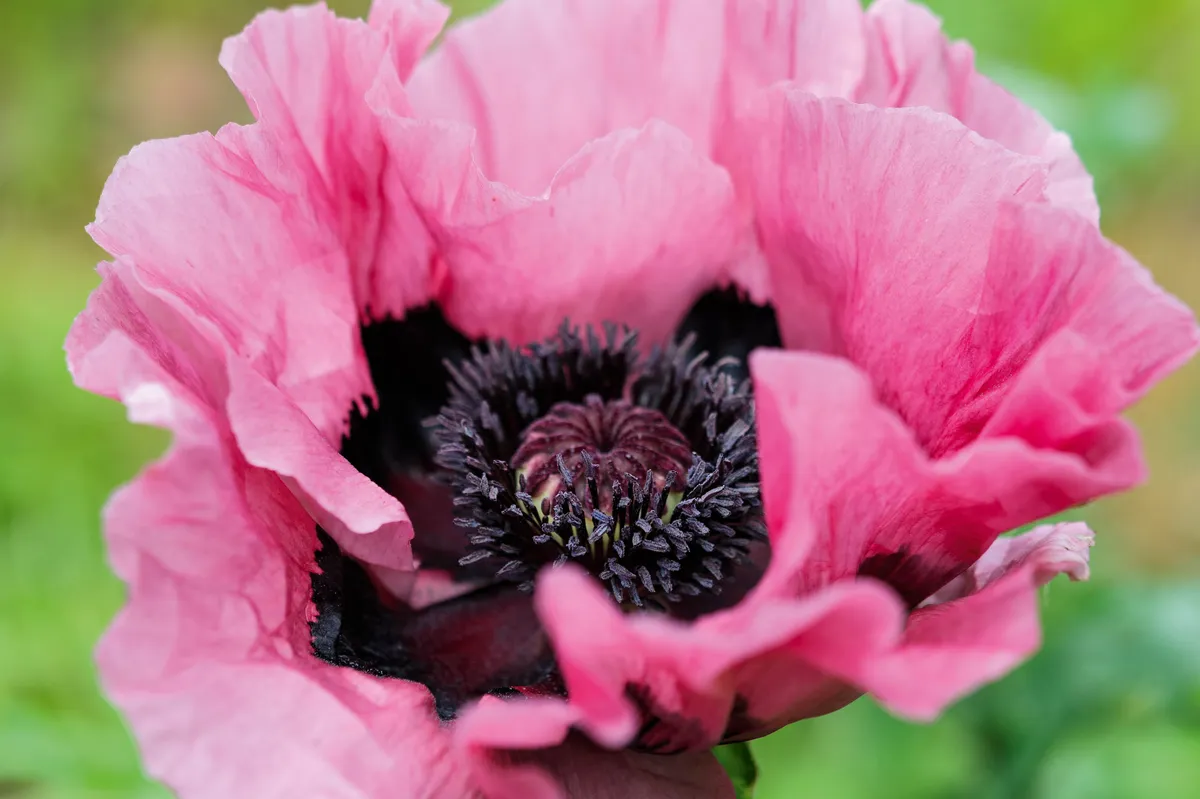
It’s gorgeous to have such showy plants as these poppies grow so quickly from seed and there’s a lot of choice of cultivar and colour, so choose and plant generously. Prefers full sun in moist yet well-drained soil. Sow direct in spring. Height: 1.2m. RHS H4, USDA 3a-7b.
Recommended by Xa Tollemache
Read about the best poppies for your garden.
Agastache aurantiaca ‘Apricot Sprite’

Over the past 20 years, agastache have developed into great garden plants, and ‘Apricot Sprite’ would be my first choice, mainly for its wonderful orange colour,
which works well with strong pinks, blues and purples. Given a free-draining soil and a sunny position, they are reliable perennials and fit brilliantly with the informal naturalistic style. Height: 45cm. RHS H2, USDA 6a-9b.
Recommended by Joseph Atkin
Verbena hastata

This verbena gets less attention than its relatives, but it’s a wonderful plant for small spaces as it’s over 1m tall but takes up very little room. It also self-seeds nicely, and distributes itself sensitively through herbaceous borders. We would not be without it. Height: 1.2m. RHS H5, USDA 3a-8b.
Recommended by Joseph Atkin
Find out how to grow verbena.
Digitalis purpurea Camelot Series
Foxgloves are a garden stalwart, and we use a number at Aberglasney, but the Camelot Series, in pink, white and cream, are the most reliable first-year flowering and longest lasting for us. If started early under glass, they will flower in their first year in a home-garden situation. Height: 1m. RHS H5.
Recommended by Joseph Atkin
Discover the best foxgloves to grow.
Rudbeckia triloba ‘Prairie Glow’
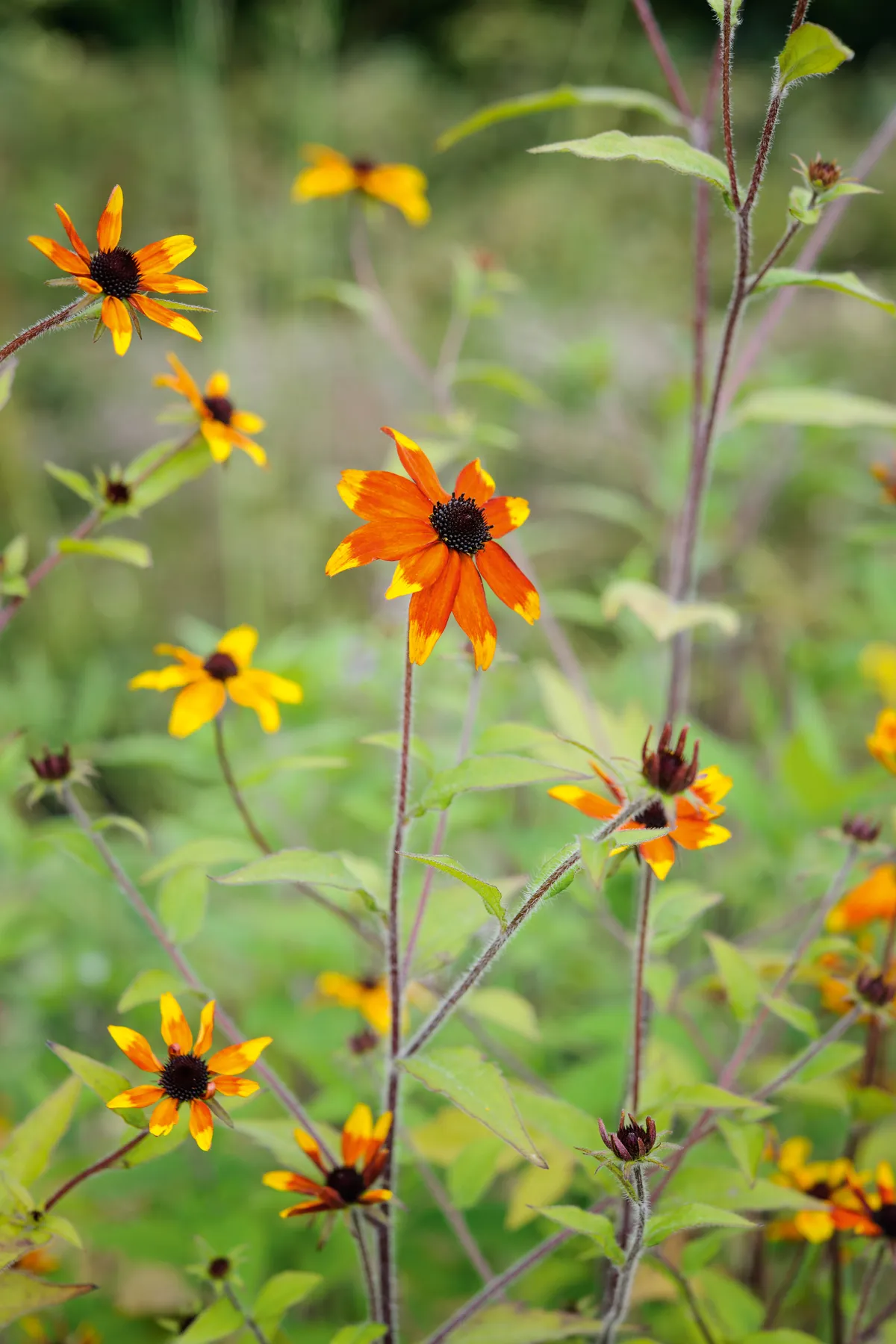
This colourful daisy can be short-lived, but happily seeds around on light, well-drained soils. This strain is similar to the species, with multi-branching stems and multitudes of small flowers, which open golden-yellow and develop an intense reddish-orange halo around a dark-brown cone as the season progresses. Height: 1.2m. RHS H6, USDA 4a-8b.
Recommended by Marina Christopher
Read our detailed guide to growing rudbeckia.
Linum narbonense
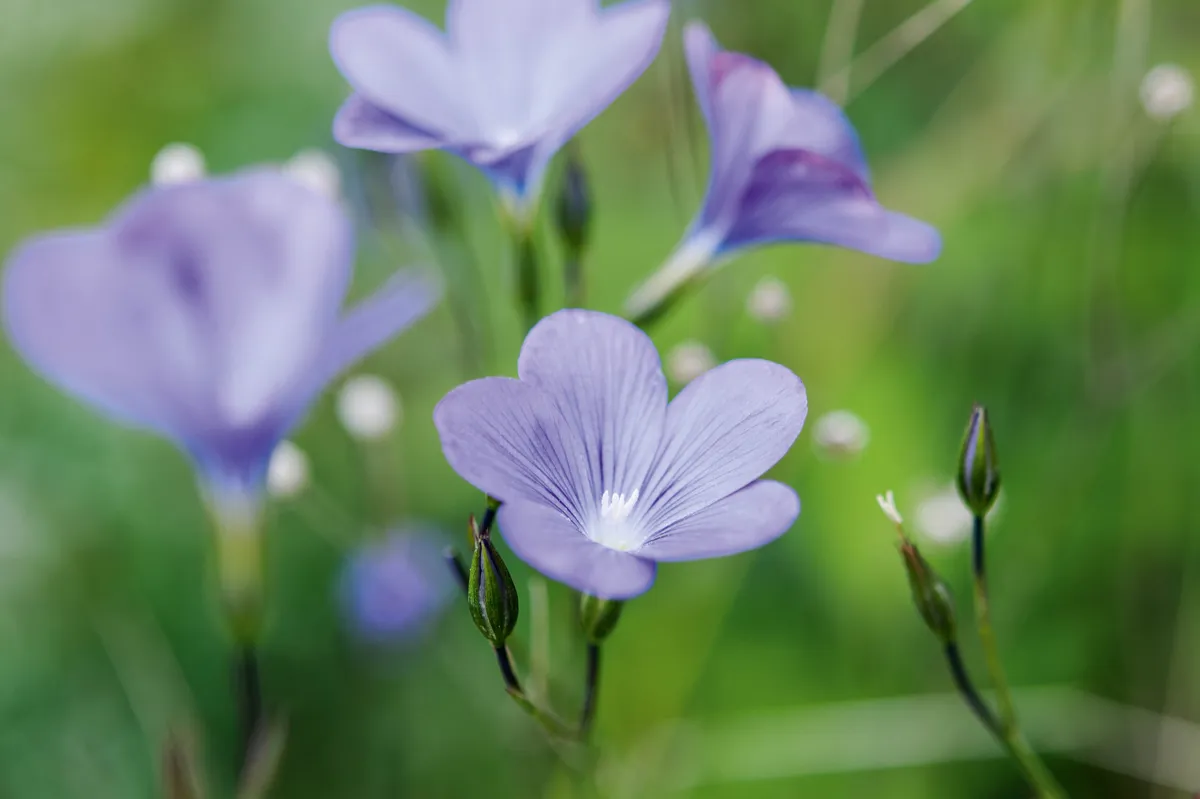
Flax blue reminds me of cloudless summer skies and warmth. This species has cone-like flowers that fold up every evening and unfurl the following day. It has erect buds sitting on stiffly upright stems but, sadly, some seed sold as Linum narbonense is in fact a form of Linum perenne with flower buds that droop before opening. Height: 45cm.
Recommended by Marina Christopher
Nicotiana suaveolens

Unlike most tobacco plants, this species originates in Australia and is reasonably perennial in mild winters. It has softly hairy foliage rosettes and tall flower stems, which are topped with long, slender, tubular, white blooms with muted green and purple calyces, and a heavenly evening fragrance. Height: 1.2m.
Recommended by Marina Christopher
Discover how to grow nicotiana.
Geranium pyrenaicum ‘Bill Wallis’
Forming low mounds of dark-green rounded foliage, this geranium is perfectly happy in shade, producing long, branching stems covered with swarms of vivid, purple-violet flowers. Although small, the vibrant blooms appear in early spring before most perennials have started to grow. Seed sown in spring will flower later in the season. Height: 30cm. RHS H6.
Recommended by Marina Christopher
Read about 21 of the best hardy geraniums.
Dianthus cruentus

This little gem of a pink has clusters of tiny blood-red flowers, with contrasting blue stamens and curly white stigmas atop slender grass-like stems and foliage. The blooms appear like jewels when planted among small grasses such as Stipa lessingiana. It prefers sun and alkaline soil. Height: 60cm. RHS H5.
Recommended by Marina Christopher
Find out how to grow dianthus.
Lychnis flos-cuculi ‘White Robin’
Ragged robin enjoys moist soils and flowers in spring with pink, slightly jagged petals. This pure-white form has attractive contrasting stems and calyces, and will light up a dark corner with its abundance of cheerful and bright flowers. Height: 40cm. RHS H7.
Recommended by Marina Christopher